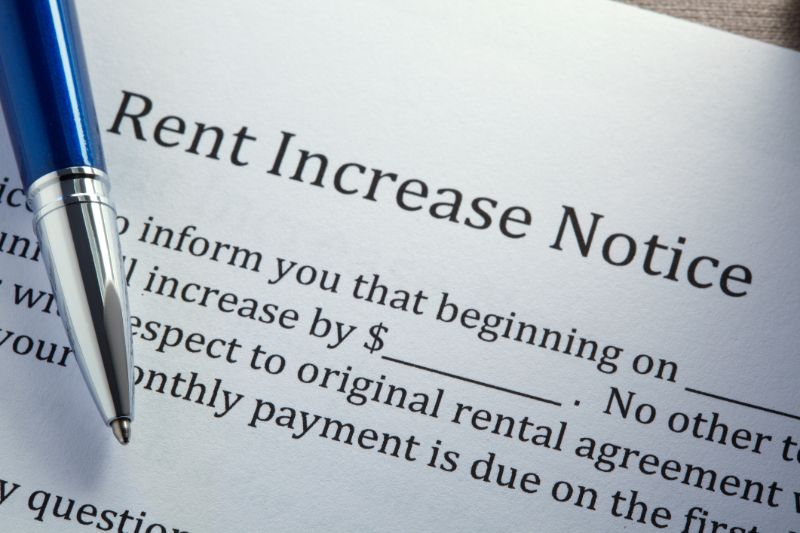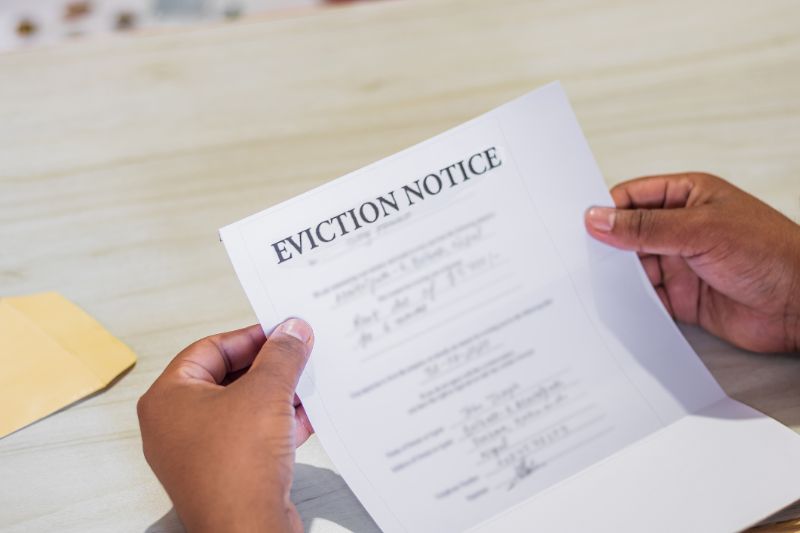
Making it big in Culver City in the aspect of real estate investment is possible, given the area’s proximity to glitzy Hollywood, its lively cosmopolitan scene, and the lovely neighborhoods here. But before you make an offer for rental properties in the area, it pays to know about the local ordinances that will most likely affect your return in investment.
One of the major developments in Culver City involves its rent control ordinances. As a landlord-to-be, you need to understand the state and city’s rent control guidelines to get the most out of your investment and to avoid costly mistakes.
This guide will ease you into the fundamentals of Culver City’s rent control statutes.
What’s inside:
- Overview
- Culver City rent control
- Registering rental property
- Exemptions
- Adjusting rent
- Landlord rights and responsibilities
- Rent increases
- Lease terminations
- For cause terminations
- No fault terminations
- Relocation assistance
- The costs of relocation assistance
- Manner of payment
- When relocation assistance is not applicable
- Protecting your tenant during major repairs
- Untenable conditions
- On payments for major repairs and temporary accommodations
- Working with a professional
Overview
For almost two years now since October 30, 2020, fees for rental properties built on or before February 1, 1995 in Culver City, CA have been assigned a cap in annual increases ranging from 2% to 5% (depending on the consumer price index). The city council has also increased landlord regulations and tenant protections then made these guidelines for rent control in Culver City permanent.
The new set of ordinances improves the city’s Interim Rent Control Ordinance (Ordinance No. 2019-011) that restricted landlords to raise rent for units built on or before Feb. 1, 1995 by only 3%. This rent control initiative in Culver City was meant to address the growing problem of homelessness in the city due to their inability to afford soaring rent prices and home values here.
Apart from City ordinances, landlords must also abide by AB 1482 or the California Tenant Protection Act of 2019 that took effect on Jan. 1, 2020. This state law affects apartments and multi-family buildings built after Feb. 1, 1995 and limits rent increase to 5% plus the local inflation rate for the next 10 years.
Culver City rent control

Landlords currently owning rentals built on or before Feb. 1, 1995 will be subject to Culver City Ordinance No. 2020-014 or the city’s rent control ordinance. These guidelines add a subchapter on rent control in Culver City’s municipal code that requires landlords to:
- Regulate rent;
- Register their rental property with the city; and
- Establish a hearing process for landlord and tenant appeals.
The subchapter of this ordinance aims to “promote long-term stability and certainty for tenants in the rental market while providing landlords an ability to receive fair and reasonable return with respect to the operation of their property.”
Registering rental property
Landlords whose rental units are subject to Culver City’s rent control ordinance (called covered rental units) must register them all with the city every July 31. You will also need to update your registration whenever you get a new tenant or when there are changes to your unit.
You need to accomplish a Rent Registration Form with the following details:
- Ownership information
- Property information
- Year built
- The date on your certificate of occupancy
- Number of bedrooms and bathrooms
- How much you currently charge for rent
- The types of amenities and services you provide your tenant
Upon receipt and approval of this form, you will receive a Rent Registration Certificate. Make sure to post a copy of this certificate where your tenants can see it, such as bulletin boards or main entrances.
If you are exempted from registering your property, you will still need to submit a written declaration of exemption, along with supporting evidence, to Culver City’s Housing Division every July 31.
Exemptions
While Culver City has comprehensive rent control guidelines, the following properties are exempted from this ordinance:
- Houses with certificates of occupancy issued after Feb. 1, 1995
- Single-family homes or townhomes, as long as the landlord:
- Owns, at most, two properties in Culver City
- Is not a real estate investment trust
- Is not a corporation or part of a corporation
- Common units in a subdivision
- Houses where a landlord receives federal, state, or local housing subsidies
Adjusting rent
Should landlords require to set a rent rate higher than the 2% to 5% cap, they can accomplish a rent adjustment application. Here, the landlord needs to properly justify the said rate increase (e.g., to recoup investments in their rental property/ies).
During this process, landlords must provide their tenants with a copy of their rent increase application, as well as every decision made by the Housing Division.
Landlord rights and responsibilities
Culver City may be strict with its rent control but landlords can still get the most out of their rental unit. They can:
- Increase rent when their property is vacant
- Apply for a higher rent adjustment
- Terminate a lease for cause or at no fault
- Recover 50% of major repair expenses
However, landlords shouldn’t forget their responsibilities to their tenants, which include:
- Yearly registration of their rental property
- Ensuring tenants’ safety during major repairs on the property
- Relocation assistance in case tenants need to vacate the property for repairs or renovations
- Documentation and filing of all notices and appeals for both the landlord’s and tenant’s records
Rent increases

According to Culver City’s rent control ordinance, the allowed range for increasing rent is only between 2% and 5%, and you can do this once a year while your unit has a tenant. However, landlords may increase their rate to match market prices once their unit is vacant.
Kicking out tenants to raise rent isn’t good business, though. Under Culver City’s rent control ordinance, landlords can only do so if:
- Their previous tenant moved out voluntarily
- The tenant’s lease was terminated for cause (more on this later)
- The landlord needs to demolish the property or remove it from the market for good
- The landlord or their family member will be moving into the unit
Lease terminations

Culver City’s tenant protections ordinance expounds on what counts as fair terminations of a tenant’s lease. It is important that you, the landlord, remember the following:
- You may only evict a tenant after they have lived in your unit for at least a year.
- The City’s eviction guidelines do not apply to
- Tenants who do not have a private kitchen and bathroom
- Tenants who have to share a common kitchen and bathroom with the landlord or the landlord’s immediate family
- Evictions must be done in writing through a notice of termination. Said notice of termination must explain the reason behind the tenant’s eviction.
- Notices of termination must follow the format set by Culver City’s Housing Division.
Once you have met all the city’s requirements and before you draft an eviction notice, make sure to read up on what type of termination applies to your situation.
The tenant protection ordinance cites two types of terminations:
For cause terminations
You may cancel your lease based on a for cause termination for the following reasons:
- The tenant fails to pay rent. If you have given your tenant a written notice to pay rent and they have not paid within three days of receiving your notice, you may consider terminating the lease.
- The tenant violates your rent agreement. While you need to give your tenant time to resolve any issues that drove them to violate your contract, you may terminate the lease if the tenant leaves these issues unresolved. Before ending anything, make sure to send them a written notice of violation and give them 10 days to act on your request.
- The tenant doesn’t let you access the unit. If the tenant continues to bar you from viewing your property even after you have sent them a written request, it may be time to consider terminating the lease.
- The tenant has become a nuisance. Keep track of neighbors’ or management’s complaints about the tenant, if any. Also, check on your unit from time to time. If the tenant disregards community guidelines or fails to keep the unit sanitary despite your written notice, it may be time for them to go.
- The tenant has committed a crime. It is a fair reason to terminate a lease if your tenant has used your unit for illegal purposes.
- The tenant used to work for you. If you have allowed a tenant to live in your property on the condition that they work for you, you may terminate their lease once their employment ends.
No fault terminations
While for cause terminations are due to a tenant’s violations, this type of termination puts no one at fault.
You can terminate a lease based on this type for the following reasons:
- The unit has to be demolished. Demolition may be required if the property is to be repurposed.
- Leaving the market. You may want to explore other businesses and thus, you will want to pull the property out of the rental market.
- You will be using the unit. You or your immediate family may want to move into the unit; thus, the tenant must move out. However, note that:
- You or your immediate family member must move into the unit within three months and stay for at least three years.
- You can only use this reason once for all your units in Culver City.
- Unless this was already stated in your contract, the tenant must agree to move out in writing.
- To comply with government orders. If the government says all tenants must vacate your unit, then your tenants are at no fault.
Before you terminate a lease at no fault, note that the following tenants are exempted from this termination type:
- Tenants who have lived in the unit for at least 10 years and meet either of these criteria:
- Has a family member who is at least 62 years old
- Has a family member with a physical disability
- Low-income tenants
- Tenants who have school-aged children currently attending public school in the same district as your rental unit
If a tenant does lose their home through no fault termination, you must help them with relocation.
Relocation assistance
A landlord must offer relocation assistance to a tenant who receives a notice of no fault termination. This should be in writing and must be given along with their notice of termination.
The costs of relocation assistance
Relocation assistance costs three times your tenant’s monthly rent plus $1,000. This amount is cut in half for small landlords—rental property owners who have at most three units in Culver City—provided that they are not affiliated with corporations or real estate investment trusts.
Manner of payment
After serving your notice of termination, you can then do the following:
- You must pay half of a tenant’s relocation assistance within five days of serving their notice of termination.
- You must pay the remaining half within five days after the tenant has moved out.
- If a rental unit has more than one tenant, you must divide the relocation assistance equally among the tenants.
Deductions can be made from a tenant’s relocation assistance if:
- The tenant has unpaid rent within the year before their termination
- The tenant has damaged the unit beyond regular wear and tear, and their security deposit is not enough to pay for repairs
When relocation assistance is not applicable
A leasing contract or government order may prevent a landlord from paying relocation assistance. Before you pay, check your records to see if:
- Before signing the lease, your tenant had been informed of your plans to demolish or repurpose your unit.
- Before signing the lease, your tenant knew that your unit would soon be demolished.
- Before serving a notice of termination, you had received government orders to vacate the property due to a natural disaster or circumstances beyond your control.
If you are not demolishing your rental unit but are planning to make major repairs, you also have a job as a landlord to keep your tenants safe and comfortable.
Protecting your tenant during major repairs
Your job as a landlord is to ensure that your rental unit is a safe place in which to live. This could mean taking on construction projects that may disrupt your tenants’ daily routines. Under Culver City’s tenant protection ordinance, this is called untenable conditions.
Untenable conditions
These are not just quick construction jobs to repair regular wear and tear. Instead, untenable conditions may involve work that:
- Requires government permits. This includes structural, mechanical, and plumbing work.
- Removes hazardous materials. Your tenants will need to move out temporarily if you are removing mold, lead-based paint, or asbestos from your property.
- Follows repairs prescribed by health, housing, and building codes. An example of this is retrofitting the entire building where your unit is located to be earthquake-safe.
- Involves fumigating the unit. For your tenants’ safety, they will need to be out of the unit when you fumigate.
- Follows government orders. If the government requires your tenants to temporarily leave the unit, they must comply.
Unless it is an emergency, you must inform your tenants of your intention to do major repairs at least a month before construction starts. It will also be your job to prepare safety protocols within the unit, find temporary accommodations for your tenants, or both.
On payments for major repairs and temporary accommodations
Your obligation as a landlord is to shoulder the amount for said repairs and accommodations. However, even if a tenant moves to a temporary home or hotel room during repairs, they must still pay rent.
Landlords may also file a Pass-through Cost Recovery Application with Culver City’s Housing Division within 120 days of completing improvements. A copy of which must be sent to all affected tenants within five days after filing the application. If approved, you may pass half the cost of repairs or capital improvements to your tenants.
However, there are certain conditions for charging pass-through costs:
- The Housing Division is the one who sets your payment schedule.
- Low-income tenants can request to waive the pass-through costs.
- You can only charge up to 3% of your current rate in pass-through costs.
Working with a professional

Complying with Culver City’s laws on rent control and tenant protection requires proper documentation, accurate accounting, and precise landlord-to-tenant communication. You, as a landlord, will also need to follow up on payments, regularly maintain your unit, and file the right government forms.
Given the whole range of responsibilities required to manage rental units, a landlord should consider working with a full-service property management company that could help you in keeping your property in tip-top shape while adhering to government rules.
When choosing a property manager, make sure to find one who:
- Has decades of experience
- Can provide 24/7 customer support
- Sends the landlord regular reports on their property
- Can oversee the entire rental process, including
- Tenant screenings
- Move-in and move-out inspections
- Repairs and maintenance
- Payments for utilities
Ready to venture into Culver City’s rental market? Give me, Martin Feinberg, a call at 310.729.6573 or send me an email at martin(at)martinfeinberg(dotted)com. Let’s make the most out of your real estate investments.